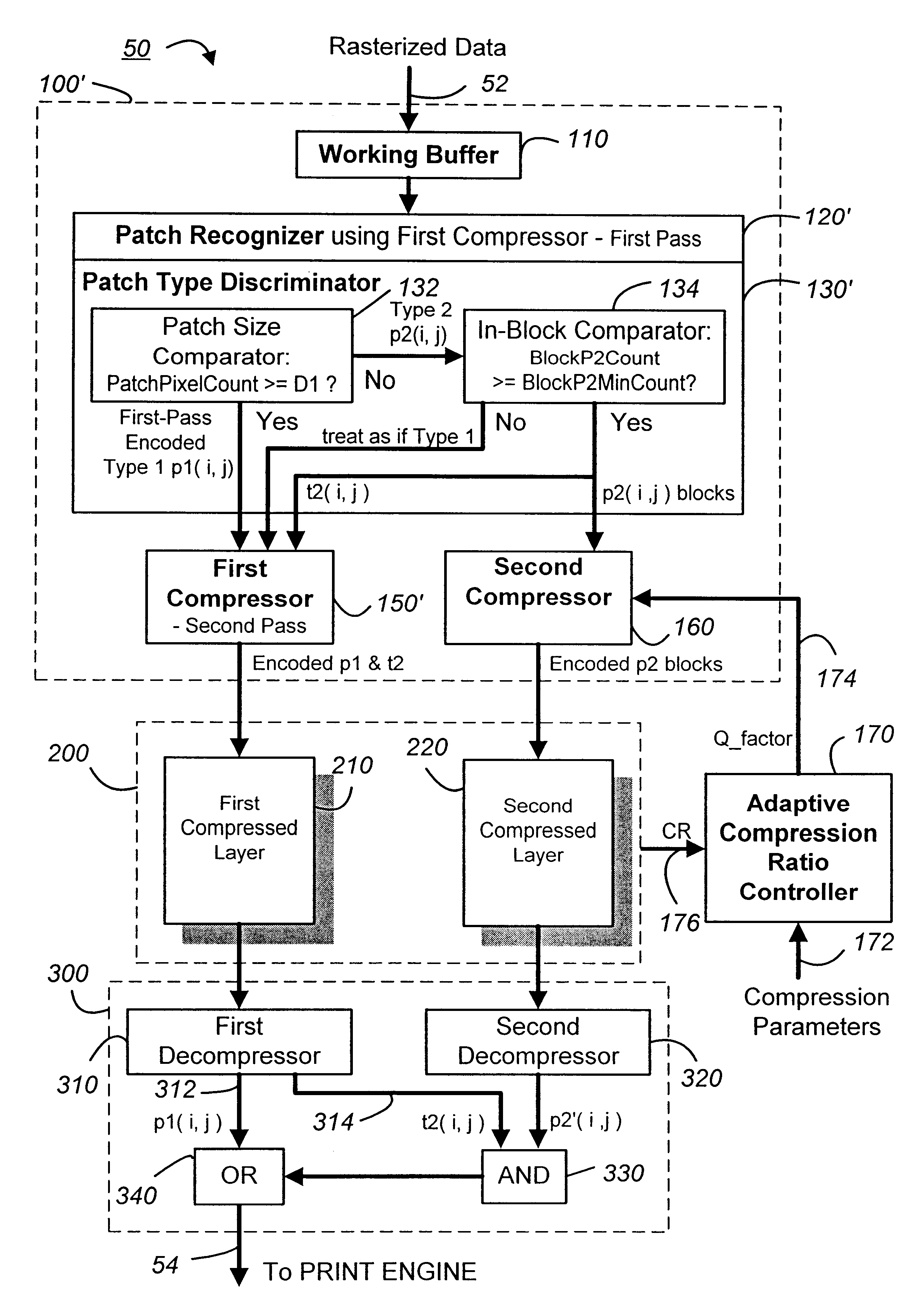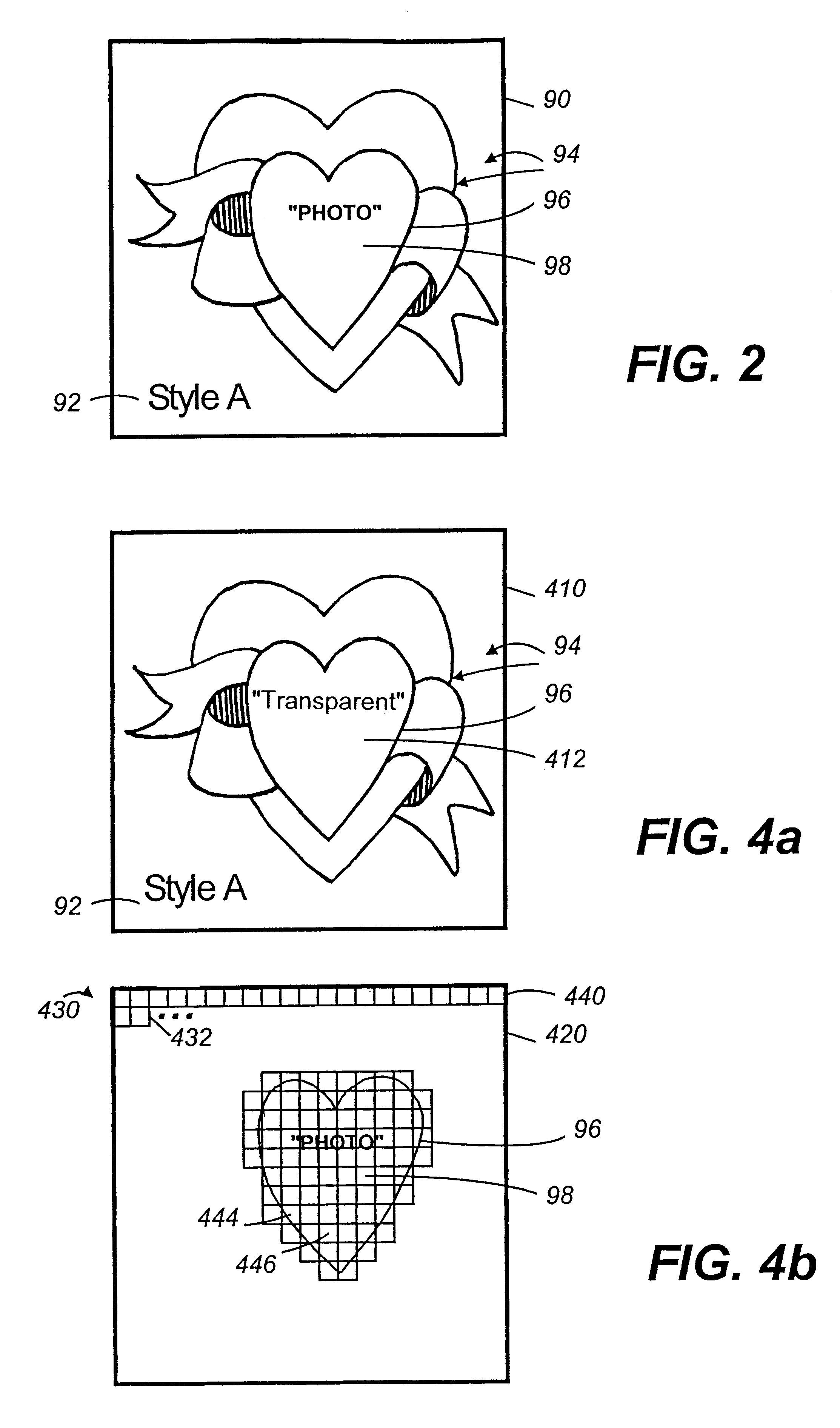Apparatus and method for hybrid compression and decompression of raster data
a technology of raster data and compression method, applied in the field of apparatus and method for hybrid compression and decompression of raster data, can solve the problems of inability to wait for raster data, inability to print engine, and inability to print raster data, etc., to achieve the effect of reducing the degradation of data
- Summary
- Abstract
- Description
- Claims
- Application Information
AI Technical Summary
Benefits of technology
Problems solved by technology
Method used
Image
Examples
Embodiment Construction
FIG. 5 is a block diagram of the apparatus and method of hybrid compression, according to another preferred embodiment of the invention. A modified first compressor in two passes essentially applies lossless run-length encoding (RLE) to Type 1 data, and the second compressor 160 applies lossy JPEG encoding to Type 2 data.
Similar to the embodiment shown in FIG. 3, the generalized page memory 50 includes the compressor 100', the compressed page buffer 200 and the decompressor 300. The compressor 100' receives rasterized data strip by strip from the input 52 into a working buffer 110. The rasterized data is then processed by a patch recognizer 120', a patch type discriminator 130' and routed to either a first compressor 150' or a second compressor 160.
One feature in the alternative embodiment is that patch recognition and a first pass of the first compressor are integrated into the same process. The first pass of the first compressor (or patch recognizer 120') applies RLE to all raster...
PUM
 Login to View More
Login to View More Abstract
Description
Claims
Application Information
 Login to View More
Login to View More - R&D
- Intellectual Property
- Life Sciences
- Materials
- Tech Scout
- Unparalleled Data Quality
- Higher Quality Content
- 60% Fewer Hallucinations
Browse by: Latest US Patents, China's latest patents, Technical Efficacy Thesaurus, Application Domain, Technology Topic, Popular Technical Reports.
© 2025 PatSnap. All rights reserved.Legal|Privacy policy|Modern Slavery Act Transparency Statement|Sitemap|About US| Contact US: help@patsnap.com



